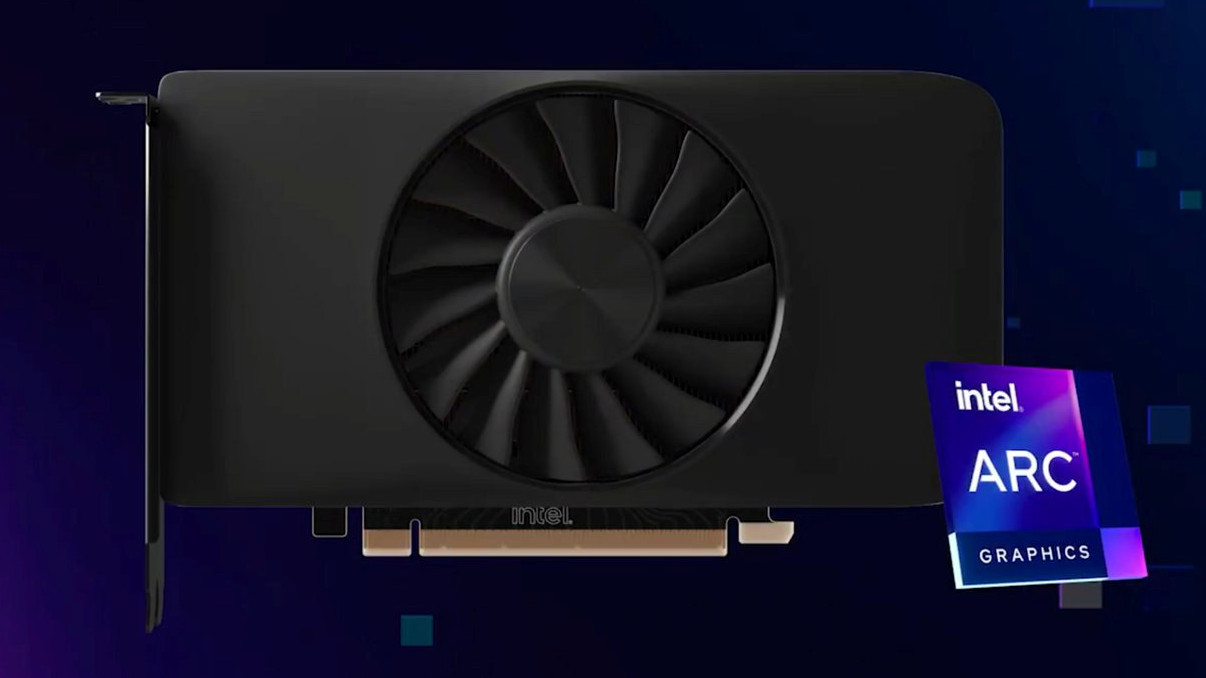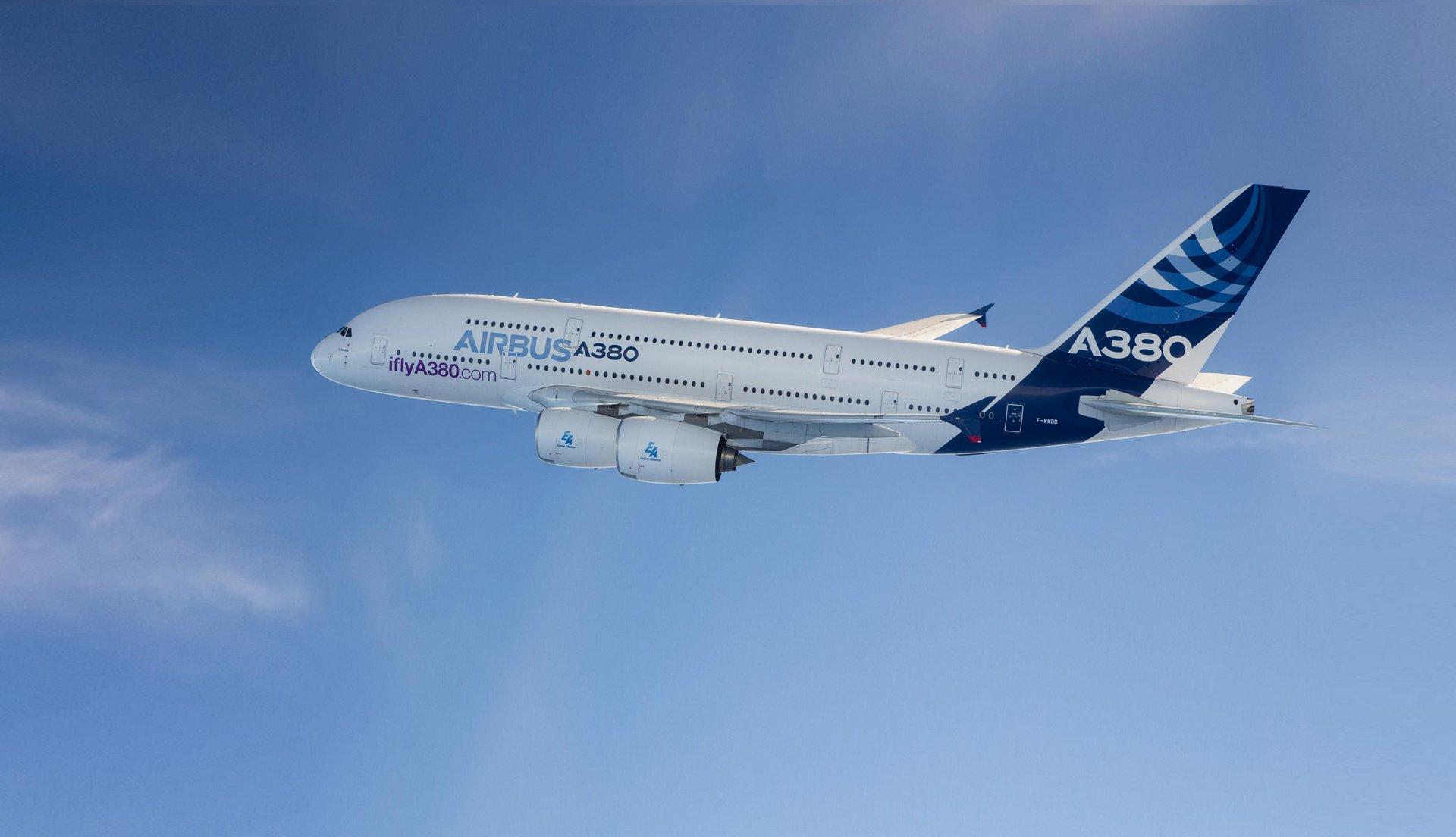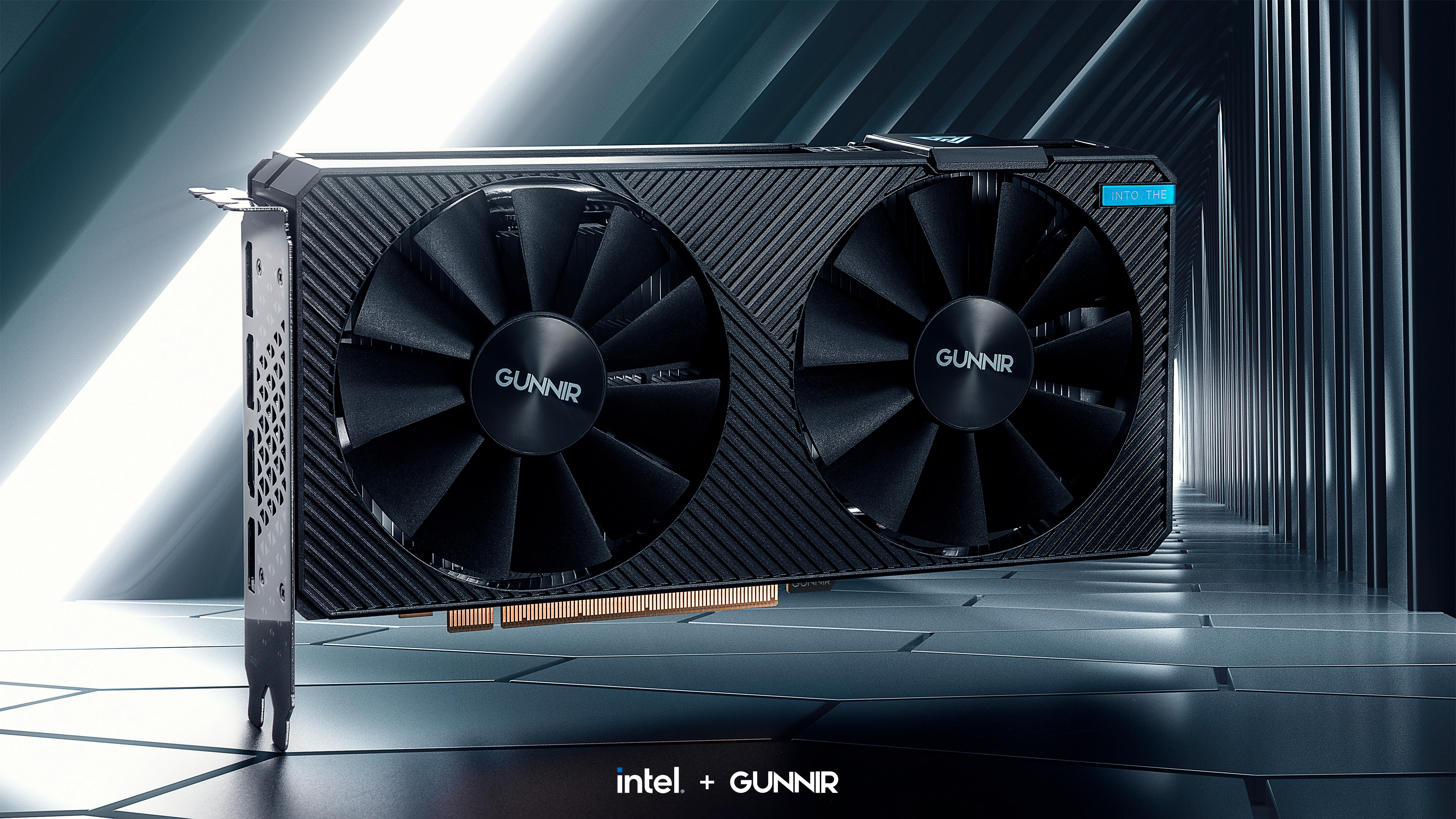Intel may have just avoided a costly legal battle - by losing one 30 years ago
The trademark law giveth and the trademark law taketh away

Anyone with eyes on the computer hardware industry will likely be aware by now that Intel is officially back in the GPU game, releasing its first laptop and desktop graphics cards in the new Arc Alchemist series after more than two decades. Arc GPUs are currently only available in China, with Intel planning to expand across the global market in the near future.
The new Arc M-series cards have been floating around in laptops in China for weeks now, while the very first desktop GPU has just launched in partnership with Chinese manufacturer Gunnir (although it’s being sold at exorbitant prices right now). That card is the Intel Arc A380, a name that might sound a little familiar to anyone with more than a passing interest in aviation.
The A380 is the world’s largest passenger aircraft, developed by Airbus to challenge the iconic Boeing 747 and produced from 2007 to 2021. A double-decker ‘airliner’ with standard capacity for over 500 passengers, the A380 is a common sight at airports these days, especially for long-haul flights to and from the Asia-Pacific region. If you’ve ever flown with Emirates or Quantas, there’s a good chance you’ve sat aboard an A380.
Here’s the important bit: ‘A380’ is a registered trademark, owned by Airbus. As a helpful reader flagged up to us, this could potentially land Intel in hot water over marketing the new GPUs using the A380 name. Trademark law is a murky, complicated business at the best of times, and some companies will pursue possible infringements aggressively to protect their trademarks - which could spell trouble for Intel.

Does Airbus have a lawsuit?
Naturally, I spoke to Intel about this. After a few days of deliberation with its legal team, it concluded that there was no danger of a lawsuit, and as such declined to offer an official statement on the matter. To understand why Intel feels that it’s safe, though, we’re going to need a brief primer on trademark law.
I’ll try to keep this as brief and not-boring as possible, because let's be honest: trademark law isn’t exactly the most riveting topic. The key thing it boils down to is the ‘likelihood of confusion’ - usually, for a trademark lawsuit to succeed, a judge has to rule that there is a non-zero chance that a consumer could get confused between two non-generic products based on the name.
Now, in this case, it would seem that Intel is in the clear already; nobody in their right mind is going to confuse a graphics card with a gigantic airplane, after all. Additionally, Airbus actually uses some Intel processor hardware in its aircraft, so ticking off Intel seems like it would be a bad idea.
Get daily insight, inspiration and deals in your inbox
Sign up for breaking news, reviews, opinion, top tech deals, and more.
But Airbus’ trademark listing does include reference to marketing materials bearing the A380 mark, indicating that Airbus might have some grounds to launch a legal offensive. Intel is obviously confident; I’d imagine that its legal team wouldn’t have greenlit the name if they were concerned, since the A380 plane isn’t exactly a secret. Partnering with Gunnir for a China-exclusive initial launch is also a somewhat canny move, since the Chinese courts are known for refusing to uphold foreign trademark lawsuits.
One key element here is that Intel hasn’t attempted to trademark A380 or any other Arc GPU designation, due to an entirely different legal precedent at play here that could work in Intel’s favor - and to delve into that, we have to go all the way back to a hotel in Sunnyvale, California, in the year 1990.
What happened in Sunnyvale?
Even back in the 80s, Intel and AMD were locked in a constant battle for CPU supremacy. As the decade drew to a close, it looked as if Intel was winning; for years, AMD had been able to produce processors that had been designed by Intel thanks to a ‘second-source’ arrangement prompted by high demand for microprocessors in new computers. But Intel had decided to end this agreement, becoming the only source of its coveted 80386 chip.
AMD had been making big money, but losing the ability to sell the 80386 processor was a huge blow. Intel owned the trademark on the 80386 (or just ‘386’), and that mark was closely guarded; Team Blue was wary of imitators, and it was right to be. It defended the trademark and the associated technology zealously, engaging in lawsuits with AMD to prevent it from continuing to utilize the microarchitecture that powered the 386.
AMD had already begun attempting to reverse-engineer its own version of the 386 chip, but before it could release it, a quirk of fate saw Intel commencing a fresh legal battle against its former business partner.
Late in 1990, an AMD marketing official from Texas by the name of Mike Webb visited Sunnyvale, where AMD’s headquarters were located. He stayed at the Hilton, unaware that an Intel engineer was staying at the same hotel - and just happened to share the name Mike Webb. When an express package was delivered to the hotel for AMD’s Mike Webb after both men had checked out, the hotel unknowingly forwarded it to the wrong Mr Webb.
That package contained marketing materials for a proposed ‘AM386’ processor. Intel’s Mike Webb turned the contents over to Intel’s legal team, who took one look at the AM386 branding, sealed the package without reading another word, and immediately filed a lawsuit against AMD for infringing the ‘386’ trademark.

A change of fate for AMD
Unfortunately for Intel, the judge ruled in AMD’s favor in March 1991, determining the ‘386’ trademark to be generic rather than an upholdable identifier of the product. This set a troublesome precedent for Intel; the manufacturer was unable to secure trademarks for the planned 486 and 586 chips, and AMD went on to release the AM386 and establish itself as a serious competitor to Team Blue in the CPU market.
The impact this had is seen in the names of every mainstream CPU on the market today: specifically that they actually have names, rather than just numbers. Intel’s next move was to establish the Pentium brand, while the numbers became a mere sub-identifier of the chip. In fact, Intel was keen to reiterate the distinction between a product name and what it called an ‘alpha-numeric product designation’ when we contacted the company regarding this story.
This legal precedent extends to GPUs too, hence why ‘A380’ is not an Intel trademark and will never become one; it’s just a designation, while ‘Intel Arc’ is the actual registered trademark. Assuming that the 1991 ruling is upheld, Airbus has no hope of a lawsuit here, since Intel basically already lost that battle.
Within the technology field, trademarking a short string of letters and numbers is basically impossible now, so it stands to reason that Intel can safely use whatever designation it wants without fear of legal retribution. And that’s the story of how, in a bizarre sequence of events, Intel might’ve just managed to avoid a lawsuit by losing a different one way back in 1991.

Christian is TechRadar’s UK-based Computing Editor. He came to us from Maximum PC magazine, where he fell in love with computer hardware and building PCs. He was a regular fixture amongst our freelance review team before making the jump to TechRadar, and can usually be found drooling over the latest high-end graphics card or gaming laptop before looking at his bank account balance and crying.
Christian is a keen campaigner for LGBTQ+ rights and the owner of a charming rescue dog named Lucy, having adopted her after he beat cancer in 2021. She keeps him fit and healthy through a combination of face-licking and long walks, and only occasionally barks at him to demand treats when he’s trying to work from home.